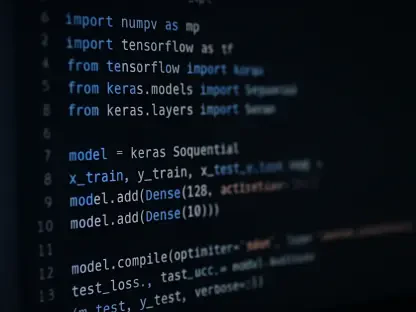Imagine a world where Java applications launch in a fraction of the time, diagnose performance issues with surgical precision, and slash infrastructure costs without changing a single line of code. This isn’t a distant dream but the reality brought by JDK 25, a Long-Term Support (LTS) release that has sparked intense discussion across the Java community. As enterprises grapple with expiring licenses and the push toward free distributions, this release emerges as a critical turning point. This roundup gathers insights, opinions, and practical tips from various industry voices to unpack three standout features of JDK 25—startup performance, observability, and memory efficiency—and explores how they redefine Java’s role in cloud-native and containerized environments.
Java’s Evolutionary Step: Why This Release Stands Out
JDK 25 marks a significant milestone as an LTS release, offering stability for enterprises while introducing enhancements tailored for modern demands. Industry analysts have noted that with licensing pressures mounting, the timing aligns perfectly with organizational needs to adopt free, reliable distributions. This release isn’t about flashy overhauls but rather targeted improvements that address pain points in speed and cost.
Cloud architects emphasize that the focus on cloud-native compatibility sets JDK 25 apart. Containerized deployments, where rapid scaling and resource optimization are non-negotiable, benefit immensely from the updates. The buzz around three key innovations—faster startups, deeper diagnostics, and leaner memory usage—has fueled debates on whether this release truly levels the playing field against proprietary solutions.
A recurring theme among tech leaders is the balance between innovation and reliability. While some argue that Java’s incremental approach ensures safe adoption for large-scale systems, others question if it keeps pace with the urgent needs of latency-sensitive sectors. These contrasting views set the stage for a deeper dive into the features driving this conversation.
Unpacking the Three Pillars of Innovation
Accelerating Launches with Project Leyden
Project Leyden’s advancements in JDK 25 tackle Java’s long-standing issue of sluggish startup and warmup times, a critical barrier in auto-scaling cloud setups. Community feedback highlights that ahead-of-time (AOT) method profiling can cut warmup periods by 30% to 70%, based on recent benchmarks. Developers working on microservices have praised this as a potential game-changer for responsive deployments.
However, opinions vary on its readiness for prime time. Some industry veterans point out that while the OpenJDK effort is promising, it lags behind production-ready alternatives like certain vendor-specific technologies that have already mastered warmup acceleration. There’s a consensus that further refinement is needed to ensure consistent results across diverse workloads.
Practical tips from cloud engineers suggest starting with pilot projects to test Project Leyden’s impact on specific applications. They advise focusing on environments where startup delays directly affect user experience or scaling efficiency. Caution remains around over-reliance on early-stage features, with many recommending a hybrid approach combining OpenJDK updates with proven tools for now.
Enhancing Diagnostics with Java Flight Recorder
The revamped Java Flight Recorder (JFR) in JDK 25 has garnered attention for transforming observability into a built-in strength. Tech bloggers and performance specialists note that upgrades like CPU time profiling and method tracing provide granular insights into bottlenecks, rivaling the depth of premium third-party tools. Real-world use cases in microservices show JFR pinpointing inefficiencies that previously required costly external solutions.
Differing perspectives emerge on its accessibility. While some developers celebrate the cost-saving potential of a native diagnostic tool, others warn of a steep learning curve for teams unfamiliar with advanced profiling. Community forums suggest that while the feature is powerful, its full benefits may be limited to organizations with dedicated performance tuning expertise.
For practical adoption, seasoned developers recommend beginning with small-scale JFR experiments to understand its output before integrating it into production monitoring pipelines. They stress documenting findings to build internal knowledge bases, ensuring teams can leverage these capabilities without external dependencies. This approach mitigates the risk of misinterpretation while maximizing diagnostic value.
Optimizing Resources with Compact Object Headers
Memory efficiency takes center stage with compact object headers, a subtle update in JDK 25 that reduces heap sizes by up to 22% on 64-bit platforms. Infrastructure managers have shared examples, such as financial systems saving hundreds of megabytes of heap space, directly translating to lower cloud costs. The added bonus of 5-10% throughput gains due to better CPU cache performance has also caught attention.
Opinions differ on the broader implications of this feature. Some industry commentators argue it’s a quiet revolution, enabling resource-heavy applications to run leaner without code changes, while others believe its impact is niche, primarily benefiting only the largest-scale deployments. There’s agreement, though, that its seamless integration makes it a low-risk win for most enterprises.
Implementation advice from system architects focuses on auditing current memory usage to quantify savings post-upgrade. They suggest prioritizing this feature for workloads with massive object counts, where heap reduction yields the most significant cost benefits. Monitoring cache performance metrics post-migration is also advised to validate throughput improvements in real-world scenarios.
Stability Versus Cutting-Edge Needs
The philosophy behind JDK 25—favoring incremental progress over disruptive shifts—draws both praise and critique. Enterprise IT leaders value this predictability, noting that it minimizes risks when upgrading mission-critical systems. They argue that the three features collectively strengthen Java’s reliability for long-term deployments.
Conversely, some voices from high-performance computing sectors express reservations. They contend that while OpenJDK’s democratization of advanced tools is commendable, latency-critical applications may still require specialized vendor solutions for optimal results. This split underscores a broader debate on whether standard releases can fully cater to niche demands.
A balanced takeaway from various discussions is that JDK 25 serves as a solid foundation for most, but not all, use cases. Tech strategists suggest evaluating specific workload requirements before committing to a full migration, ensuring alignment with organizational priorities. This pragmatic stance bridges the gap between stability seekers and performance chasers.
Actionable Insights for Adoption
For IT decision-makers, the combined impact of JDK 25’s features on speed, diagnostics, and cost presents a compelling case for migration. Community consensus points to prioritizing cloud-heavy workloads for early adoption, where startup improvements and memory savings deliver immediate returns. Leveraging JFR for in-house monitoring is also seen as a smart move to reduce external tooling expenses.
Practical steps include conducting phased rollouts to test compatibility with existing systems. Many in the developer ecosystem advocate for thorough benchmarking of each feature’s impact before full deployment. Engaging with online Java communities for shared learnings is another tip, helping teams navigate early-stage limitations with collective insights.
Looking beyond immediate upgrades, the discussions around JDK 25 reflect a push toward building internal expertise in these new capabilities. Investing in training for tools like JFR was often cited as a way to future-proof teams. Additionally, keeping an eye on OpenJDK’s roadmap from 2025 onward was recommended to anticipate refinements that could further enhance these features, ensuring organizations stay ahead of the curve.









